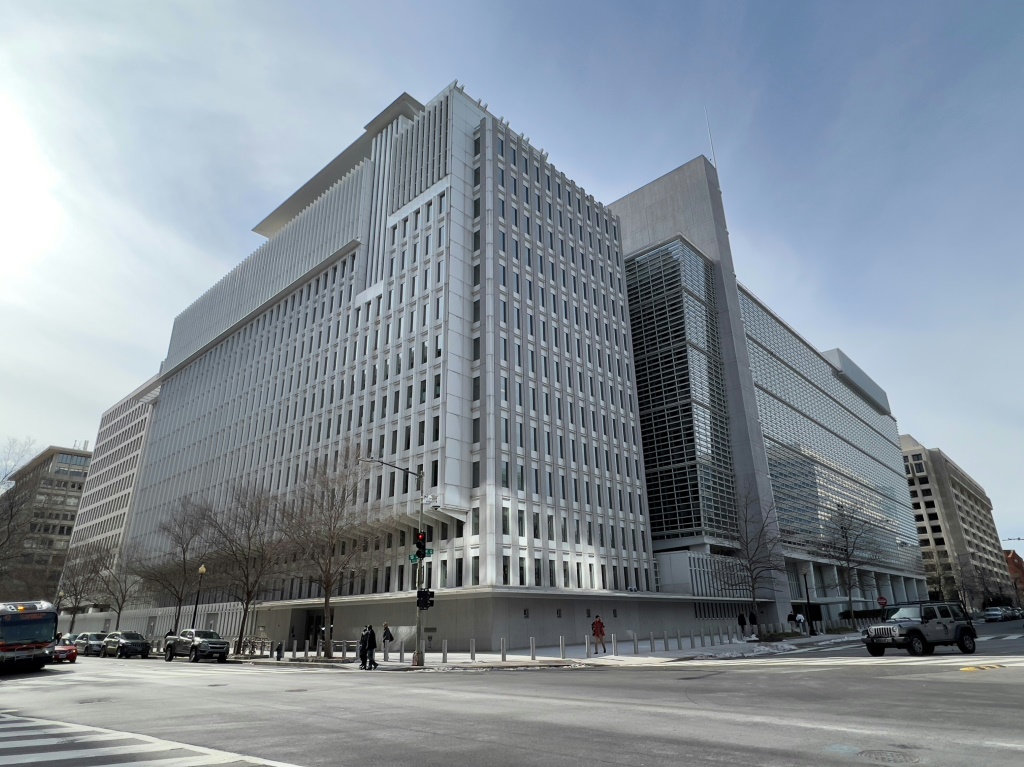The World Bank headquarters in Washington, January 19, 2022
Almost all emerging countries, such as China, India and Brazil, risk finding themselves trapped in the “middle-income trap” and not reaching the status of developed countries if they do not take the right decisions, the World Bank (WB) warned in a report on Thursday.
The middle-income trap refers to the risk that a country, after reaching a certain level of development, will not succeed in taking the last step necessary to become a developed country.
According to the World Bank, middle-income, or emerging, countries are those with a GDP per capita of between $1,136 and $13,845. This category includes China ($12,614 in 2023), Brazil ($10,043 in 2023) and India ($2,485 in 2023).
For these countries, the danger lies in increasing spending without sufficient GDP per capita, which could slow down their economic growth and keep them in emerging country status.
“Too many of these countries are relying on outdated strategies to become developed countries,” World Bank Chief Economist Indermit Gill said in a statement. “They are either focusing too long on investment or turning too soon to innovation.”
The World Bank advocates a sequenced approach: an initial investment phase, followed by a gradual integration of innovation into the national economy, to finally achieve a balance between the two approaches.
“Given demographic, ecological and geopolitical pressures, there is no room for error,” Gill warned.
These countries account for more than 60% of the world’s people living in extreme poverty and a similar proportion of annual carbon emissions, further complicating their situation.
The World Bank cites South Korea as a success story. The country managed all three phases and saw its GDP per capita rise from $1,200 in 1960 to more than $33,000 in 2023, with the rise of innovative companies such as Samsung, which started out as a noodle maker.
LNT
#Emerging #countries #World #Bank #warns #middle #income #trap
– 2024-08-05 09:12:00


